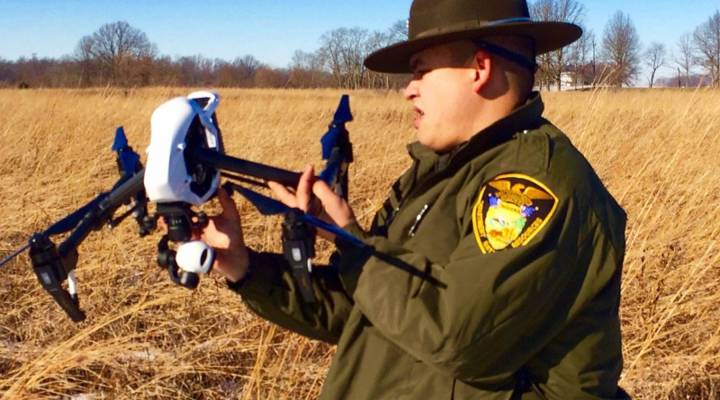
Drones to help with Indiana search and rescue efforts

Drones have been used in war. Amazon has tested them for deliveries. Now one state is going to start using them to assist with search and rescue. The FAA has licensed Indiana’s Department of Natural Resources (DNR) to use drones as a way to find people who may be lost in the wilderness, and help those who are injured.
Drone pilot Matt Garringer with Indiana’s DNR was the first with the state to get his FAA license. Despite icy winds on a bitterly cold day, he was more than willing to demonstrate the new Inspire 1V2’s capabilities. In fact, he thought it was the perfect scenario for flying a search and rescue drone.
“For instance there’s this pond over here. If someone were to fall through it, I could fly over it and see weak points in the ice and I could see where they fell in,” said Garringer.
The drone is equipped with video cameras and GPS. It can can fly up to 400 feet high and as far as three miles. It can alert rescuers to unseen obstacles ahead or hover over a victim to assess injuries so rescuers can bring specific supplies.
The drones cost $3,500 apiece. The division already has four drones and plans to have a total of 17 by the end of 2017. The new technology will change the way the state conducts rescues. In the past, helicopters were sent out as a last resort when search and rescue authorities were sure they couldn’t find a victim without extra assistance. Now, the drones can be used as a first line of defense, said DNR spokesman Rod Clear.
“You could be saving a life just by the minutes it’s going to be saving an officer or their equipment to get to that certain area,” he said.
The drones could also save money. For example, it’s less expensive to charge a drone battery than it is to fuel a helicopter.
Search and rescue drone technology is so new that many places like Hawaii, Minnesota, and Michigan are still exploring appropriate policies. One sticking point: privacy and personal rights. Indiana addressed those concerns by making it clear that it will be using the drones for search and rescue only, said Ken Falk with American Civil Liberties Union of Indiana.
“It strikes me that using drones for search and rescue is completely appropriate and does not raise constitutional concerns provided that that is precisely what the drone is used for, and that the use of the drone is not a pretext for some other type of search,” Falk said.
The program Garringer helped start is becoming a model for other states. He’s already demonstrated the drone’s capabilities for officials in Kentucky and Ohio.
There’s a lot happening in the world. Through it all, Marketplace is here for you.
You rely on Marketplace to break down the world’s events and tell you how it affects you in a fact-based, approachable way. We rely on your financial support to keep making that possible.
Your donation today powers the independent journalism that you rely on. For just $5/month, you can help sustain Marketplace so we can keep reporting on the things that matter to you.












